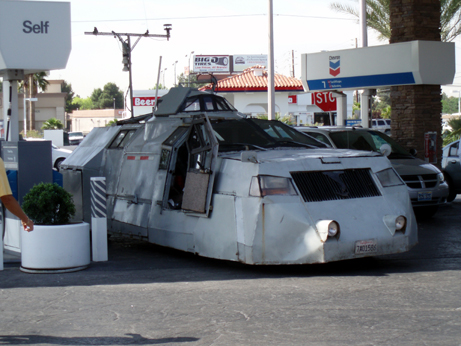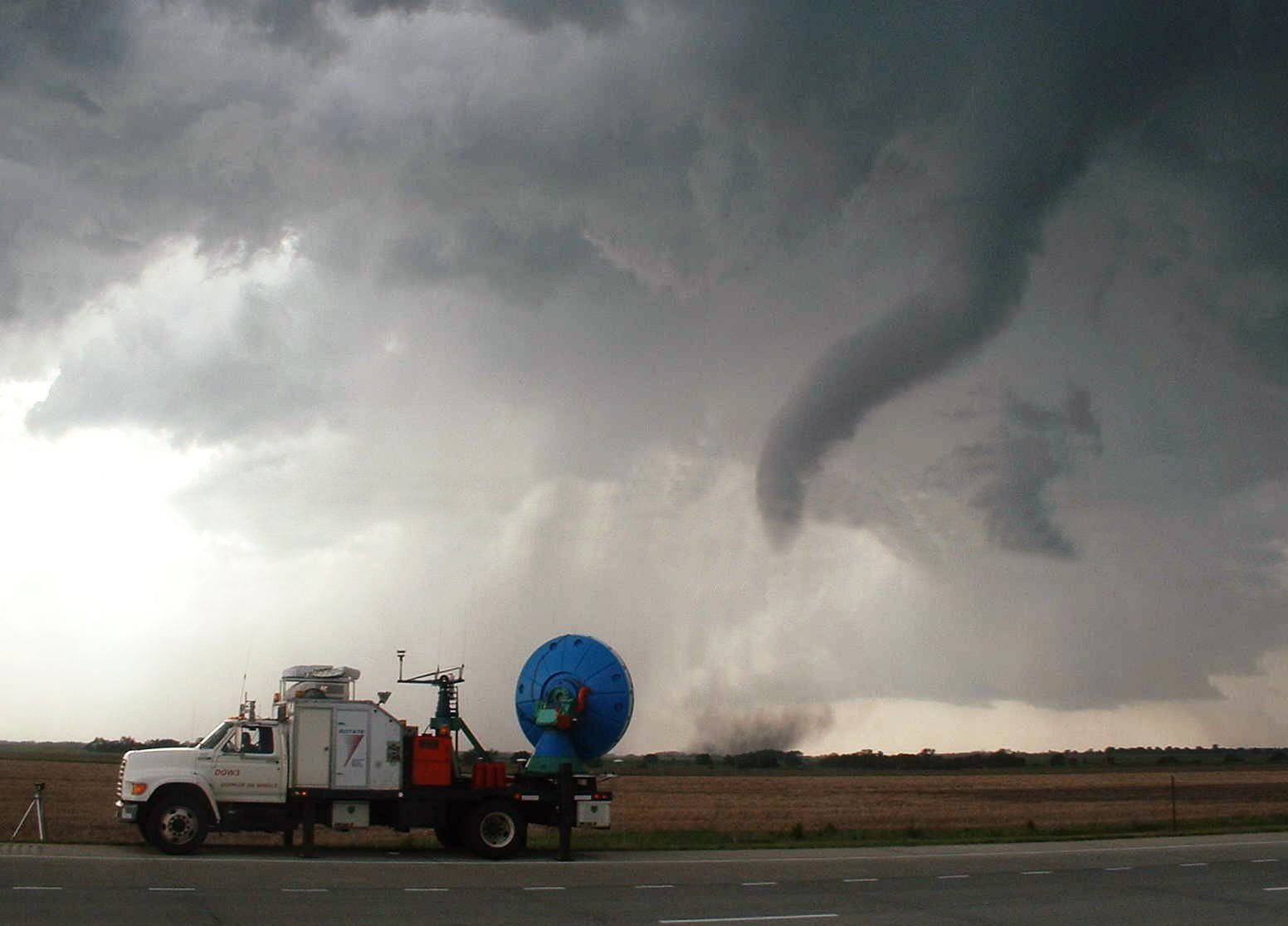|
David Dowell
David C. Dowell is American atmospheric scientist recognized for research on tornado structure and dynamics and on tornadogenesis. He participated in both of the VORTEX projects. Dowell studied computer science at Texas A&M University (TAMU), earning a B.S. ''summa cum laude'' in 1991 with a minor in meteorology. He was awarded a M.S. and a Ph.D. in meteorology from the University of Oklahoma (OU) in 1994 and 2000, respectively. He was on the steering committee, was a principal investigator (PI), and was field coordinator (FC) for the VORTEX2 field project in 2009-2010. Dowell is a Fellow of the Cooperative Institute for Mesoscale Meteorological Studies (CIMMS) at OU. He was a contributor to '' Storm Track'' magazine. See also * Howard Bluestein * Erik N. Rasmussen * Louis Wicker * Joshua Wurman Joshua Michael Aaron Ryder Wurman (born October 1, 1960) is an American atmospheric scientist and inventor noted for tornado, tropical cyclone, and weather radar research. ... [...More Info...] [...Related Items...] OR: [Wikipedia] [Google] [Baidu] |
Meteorology
Meteorology is a branch of the atmospheric sciences (which include atmospheric chemistry and physics) with a major focus on weather forecasting. The study of meteorology dates back millennia, though significant progress in meteorology did not begin until the 18th century. The 19th century saw modest progress in the field after weather observation networks were formed across broad regions. Prior attempts at prediction of weather depended on historical data. It was not until after the elucidation of the laws of physics, and more particularly in the latter half of the 20th century the development of the computer (allowing for the automated solution of a great many modelling equations) that significant breakthroughs in weather forecasting were achieved. An important branch of weather forecasting is marine weather forecasting as it relates to maritime and coastal safety, in which weather effects also include atmospheric interactions with large bodies of water. Meteorological pheno ... [...More Info...] [...Related Items...] OR: [Wikipedia] [Google] [Baidu] |
VORTEX2
The Verification of the Origins of Rotation in Tornadoes Experiment (or VORTEX) are field experiments that study tornadoes. VORTEX1 was the first time scientists completely researched the entire evolution of a tornado with an array of instrumentation, enabling a greater understanding of the processes involved with tornadogenesis. A violent tornado near Union City, Oklahoma was documented in its entirety by chasers of the Tornado Intercept Project (TIP) in 1973. Their visual observations led to advancement in understanding of tornado structure and life cycles. VORTEX2 used enhanced technology that allowed scientists to improve forecasting capabilities and improve lead time on advanced warnings to residents. VORTEX2 sought to reveal how tornadoes form, how long they last and why they last that long, and what causes them to dissipate. VORTEX1 and VORTEX2 was based on the use of large fleets of instrumented vehicles that ran on land, as well as aircraft and mobile radars. Important wo ... [...More Info...] [...Related Items...] OR: [Wikipedia] [Google] [Baidu] |
Storm Chasers
''Storm Chasers'' is an American documentary reality television series that premiered on October 17, 2007, on the Discovery Channel. Produced by Original Media, the program follows several teams of storm chasers as they attempt to intercept tornadoes in Tornado Alley in the United States. The show was canceled at the end of its 5th season by Discovery Communications on January 21, 2012. Overview ''Storm Chasers'' was filmed each year in the central United States (an area known as Tornado Alley due to the frequency and severity of tornadoes occurring there) primarily during late spring and early summer, the time of the most frequent tornado activity (though some episodes of recent seasons have also been filmed in the lesser-known Dixie Alley in the southeastern U.S.). Several teams of storm chasers appear in the series. During the 2007 and 2008 seasons Dr. Joshua Wurman, a renowned atmospheric scientist and creator of the Doppler On Wheels (DOW), teamed with documentary IM ... [...More Info...] [...Related Items...] OR: [Wikipedia] [Google] [Baidu] |
University Of Oklahoma Alumni
A university () is an educational institution, institution of higher education, higher (or Tertiary education, tertiary) education and research which awards academic degrees in several Discipline (academia), academic disciplines. Universities typically offer both undergraduate education, undergraduate and postgraduate education, postgraduate programs. In the United States, the designation is reserved for colleges that have a graduate school. The word ''university'' is derived from the Latin ''universitas magistrorum et scholarium'', which roughly means "community of teachers and scholars". The first universities were created in Europe by Catholic Church monks. The University of Bologna (''Università di Bologna''), founded in 1088, is the first university in the sense of: *Being a high degree-awarding institute. *Having independence from the ecclesiastic schools, although conducted by both clergy and non-clergy. *Using the word ''universitas'' (which was coined at its foundation ... [...More Info...] [...Related Items...] OR: [Wikipedia] [Google] [Baidu] |
Texas A&M University Alumni
Texas (, ; Spanish: ''Texas'', ''Tejas'') is a state in the South Central region of the United States. At 268,596 square miles (695,662 km2), and with more than 29.1 million residents in 2020, it is the second-largest U.S. state by both area (after Alaska) and population (after California). Texas shares borders with the states of Louisiana to the east, Arkansas to the northeast, Oklahoma to the north, New Mexico to the west, and the Mexican states of Chihuahua, Coahuila, Nuevo León, and Tamaulipas to the south and southwest; and has a coastline with the Gulf of Mexico to the southeast. Houston is the most populous city in Texas and the fourth-largest in the U.S., while San Antonio is the second most populous in the state and seventh-largest in the U.S. Dallas–Fort Worth and Greater Houston are, respectively, the fourth- and fifth-largest metropolitan statistical areas in the country. Other major cities include Austin, the second most populous state capital in ... [...More Info...] [...Related Items...] OR: [Wikipedia] [Google] [Baidu] |
American Meteorologists
American(s) may refer to: * American, something of, from, or related to the United States of America, commonly known as the "United States" or "America" ** Americans, citizens and nationals of the United States of America ** American ancestry, people who self-identify their ancestry as "American" ** American English, the set of varieties of the English language native to the United States ** Native Americans in the United States, indigenous peoples of the United States * American, something of, from, or related to the Americas, also known as "America" ** Indigenous peoples of the Americas * American (word), for analysis and history of the meanings in various contexts Organizations * American Airlines, U.S.-based airline headquartered in Fort Worth, Texas * American Athletic Conference, an American college athletic conference * American Recordings (record label), a record label previously known as Def American * American University, in Washington, D.C. Sports teams Soccer * ... [...More Info...] [...Related Items...] OR: [Wikipedia] [Google] [Baidu] |
Joshua Wurman
Joshua Michael Aaron Ryder Wurman (born October 1, 1960) is an American atmospheric scientist and inventor noted for tornado, tropical cyclone, and weather radar research. Life and career Education Joshua Wurman's father is noted architect and founder of the TED conferences, Richard Saul Wurman. He attended Radnor High School in suburban Philadelphia. He earned a S.B. in physics and interdisciplinary science in 1982, a S.M. in meteorology in 1982, and a Sc.D. in meteorology in 1991, all from MIT. His masters thesis was The Long Range Dispersion of Radioactive Particulates' and his doctoral dissertation was Forcing Mechanisms of Thunderstorm Downdrafts'. He moved to Boulder, Colorado to work at the National Center for Atmospheric Research (NCAR) and later to Norman, Oklahoma where he was a tenured faculty member at the University of Oklahoma (OU). He founded the Center for Severe Weather Research (CSWR) in 1998, which operates the Doppler On Wheels (DOW) radars. Wurman returned ... [...More Info...] [...Related Items...] OR: [Wikipedia] [Google] [Baidu] |
Louis Wicker
Louis John Wicker (born September 30, 1959) is an American atmospheric scientist with expertise in numerical analysis, numerical simulation, and forecasts of severe convection and tornadoes. Doing storm chasing field research, Wicker deployed the TOtable Tornado Observatory (TOTO) and was in leadership roles in the VORTEX projects. He is also known for pioneering work simulating convection at the National Center for Supercomputing Applications (NCSA) at the University of Illinois at Urbana–Champaign (UIUC). Wicker earned a B.S. and M.S. in meteorology from the University of Oklahoma (OU) in 1984 and 1986, respectively, with the masters thesis: ''A Simulation Study of a Data Assimilation Scheme Designed for VAS Temperature Soundings''. He was awarded a Ph.D. in atmospheric sciences from UIUC in 1990 with the doctoral dissertation: ''A Numerical Study of a Tornado-Scale Vortex in a Three-Dimensional Cloud Model''. From 1990-1992 he was a Visiting Associate Research Scientist ... [...More Info...] [...Related Items...] OR: [Wikipedia] [Google] [Baidu] |
Howard Bluestein
Howard Bruce Bluestein is a research meteorologist known for his mesoscale meteorology, severe weather, and radar research. He is a major participant in the VORTEX projects. A native of the Boston area, Dr. Bluestein received his Ph.D. in 1976 from MIT. He has been a professor of meteorology at the University of Oklahoma (OU) since 1976. Background Bluestein's masters thesis was Prediction of Satellite Cloud Patterns Using Spatial Fourier Transforms' and his doctoral dissertation was Synoptic-scale Deformation and Tropical Cloud Bands'. He is the George Lynn Cross Research Professor at the OU School of Meteorology. He was on the steering committee and was a principal investigator (PI) foVORTEX2 the field phase of which occurred from 2009-2010. Bluestein is a Fellow of the American Meteorological Society (AMS), served on the National Research Council (NRC) Board of Atmospheric Sciences and Climate (BASC) and on the NRC Committee on Weather Radar Technology Beyond NEXRAD. Bluestein ... [...More Info...] [...Related Items...] OR: [Wikipedia] [Google] [Baidu] |
Storm Track (magazine)
''Storm Track'' was the first magazine for and about storm chasing. The magazine was in circulation between 1977 and 2002. History and profile ''Storm Track'' was started in 1977 by chasing pioneer David Hoadley following an informal meeting of storm chasers at an American Meteorological Society conference. In the beginning, it was published in newsletter format in Falls Church, Virginia, but in time assumed a magazine format and was published bimonthly throughout its history. In 1986, editorship was handed over to Tim Marshall, a storm damage engineer (and meteorologist). Production of paper issues ceased in 2002 after a 25-year run; however, an accompanying website started in 1996 and continues primarily in the form of a large discussion board. ''Storm Track'', among other topics, published storm chase accounts, discussions of issues affecting storm chasing, history of storm chasing and meteorology, meteorological analysis and case studies, climatology, reviews, biographie ... [...More Info...] [...Related Items...] OR: [Wikipedia] [Google] [Baidu] |
Principal Investigator
In many countries, the term principal investigator (PI) refers to the holder of an independent grant and the lead researcher for the grant project, usually in the sciences, such as a laboratory study or a clinical trial. The phrase is also often used as a synonym for "head of the laboratory" or "research group leader". While the expression is common in the sciences, it is used widely for the person or persons who make final decisions and supervise funding and expenditures on a given research project. A co-investigator (Co-I) assists the principal investigator in the management and leadership of the research project. There may be a number of co-investigators supporting a PI. Federal funding In the context of United States federal funding from agencies such as the National Institutes of Health (NIH) or the National Science Foundation (NSF), the PI is the person who takes direct responsibility for completion of a funded project, directing the research and reporting directly to the fun ... [...More Info...] [...Related Items...] OR: [Wikipedia] [Google] [Baidu] |




